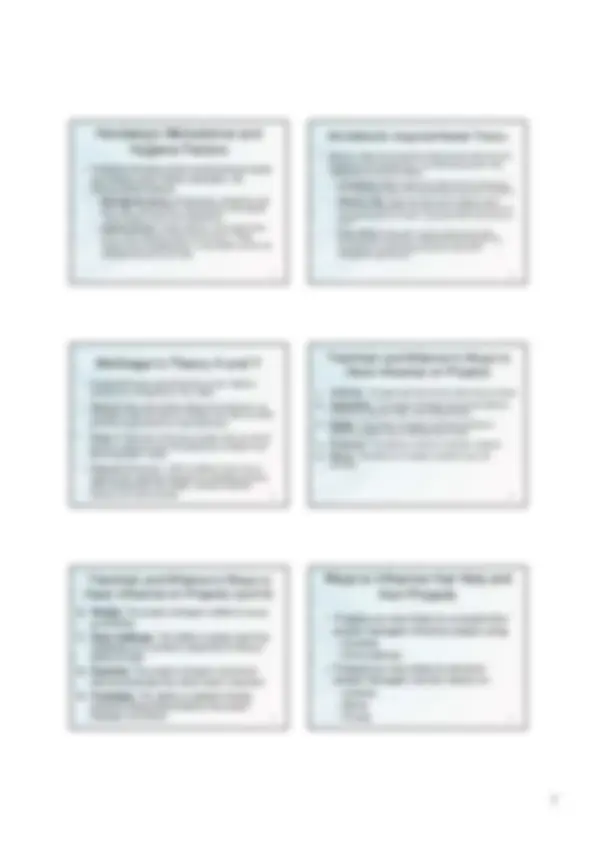







Study with the several resources on Docsity

Earn points by helping other students or get them with a premium plan


Prepare for your exams
Study with the several resources on Docsity

Earn points to download
Earn points by helping other students or get them with a premium plan
Community
Ask the community for help and clear up your study doubts
Discover the best universities in your country according to Docsity users
Free resources
Download our free guides on studying techniques, anxiety management strategies, and thesis advice from Docsity tutors
This document about Project Human Resource Management, The Importance of Human Resource Management, Digital Planet Reports, Long Hours and Stereotypes of IT Workers Hurt Recruiting, Media Snapshot, What is Project Human Resource Management?.
Typology: Lecture notes
1 / 9

This page cannot be seen from the preview
Don't miss anything!






2
Learning Objectives
3
Learning Objectives
The Importance of Human
Resource Management
*Information Technology Association of America (ITAA), “Recovery Slight for IT Job Market in 2004,” (September 8, 2004) www.itaa.org.
5
Digital Planet Reports
*Information Technology Association of America (ITAA), “Global IT Spending to Rocket from Current $2 Trillion to $3 Trillion, New Study Finds,” Update for IT Executives (2001) p. 6 (15) www.itaa.org. (^6)
Long Hours and Stereotypes of IT
Workers Hurt Recruiting
7
Media Snapshot
*Williams, Joan and Ariane Hegewisch, “Confusing productivity with long work week,” Minneapolis Star Tribune (September 6, 2004) ( www.startribune.com ). 8
What is Project Human
Resource Management?
9
Keys to Managing People
10
Intrinsic and Extrinsic Motivation
11
Maslow’s Hierarchy of Needs
Maslow’s Hierarchy
of Needs
19
21
22
23
24
25
Work Definition and Assignment
Process
26
Responsibility Assignment
Matrixes
27
Sample Responsibility
Assignment Matrix (RAM)
28
RAM Showing Stakeholder
Roles
29
Sample RACI Chart
R = Responsibility, only one R per task A = Accountability C = Consultation I = Informed 30
Staffing Management Plans and
Resource Histograms
37
Resource Leveling Example
38
Benefits of Resource Leveling
39
Developing the Project Team
help people work together more effectively to improve project performance.
most projects.
40
Tuckman Model of Team
Development
41
Training
themselves and each other, and understand how to work better in teams.
42
Myers-Briggs Type Indicator
(MBTI)
43
Wideman and Shenhar’s Views on
MBTI and Project Management*
*Wideman, R. Max and Aaron J. Shenhar, “Professional and Personal Development: A Practical Approach to Education and Training,” Project Management for Business Professionals , edited by Joan Knutson, 2001, p. 375. 44
MBTI and Suitability to Project
Work*
*Wideman, R. Max. “Project Teamwork, Personality Profiles and the Population at Large: Do we have enough of the right kind of people?” (http://www.maxwideman.com/papers/profiles/profiles.pdf ).
What do you think about these views?
45
Social Styles Profile
in one of four zones, based on their assertiveness and responsiveness:
amiables, analyticals and expressives) may have difficulty getting along. 46
Social Styles
47
Reward and Recognition
Systems
Managing the Project Team